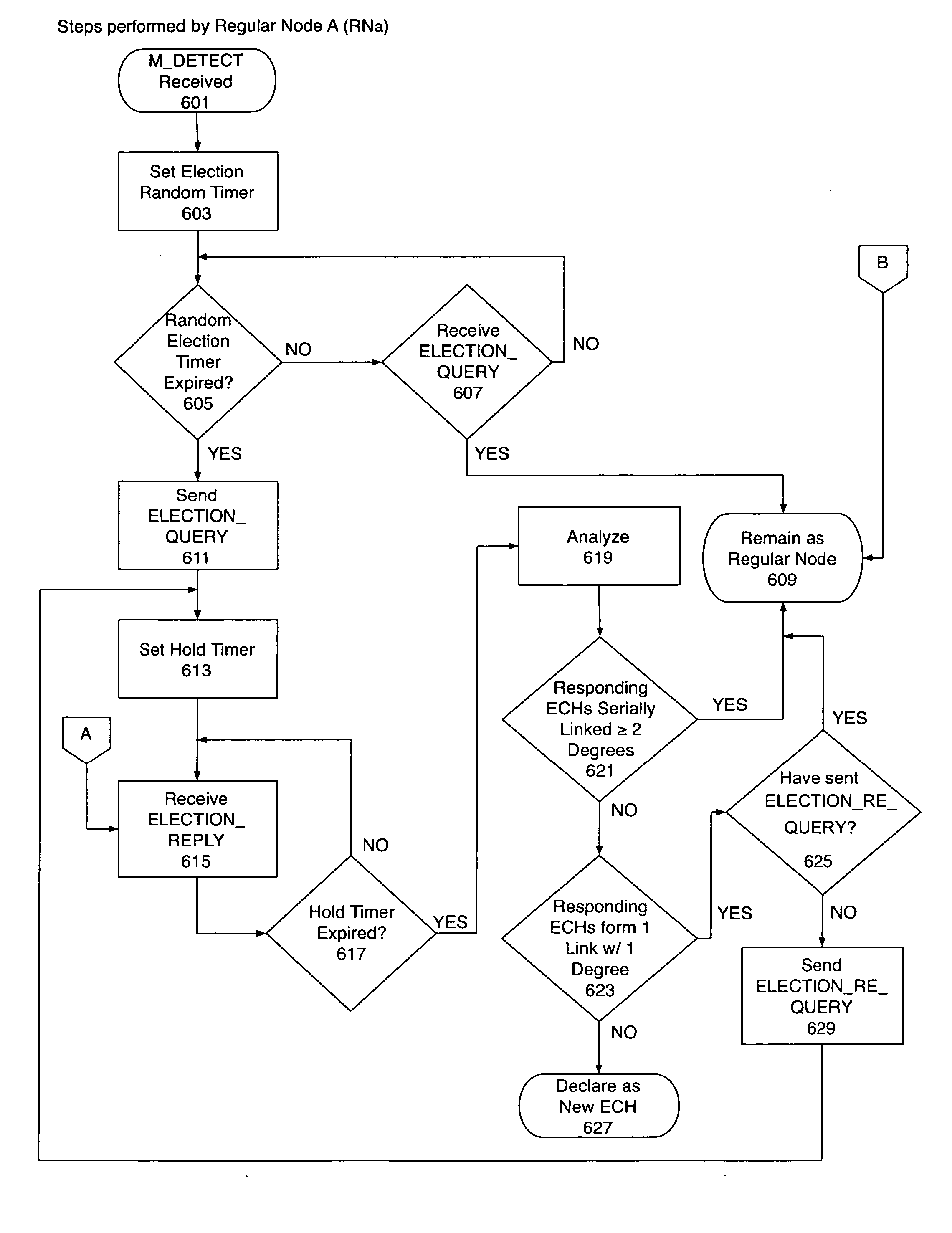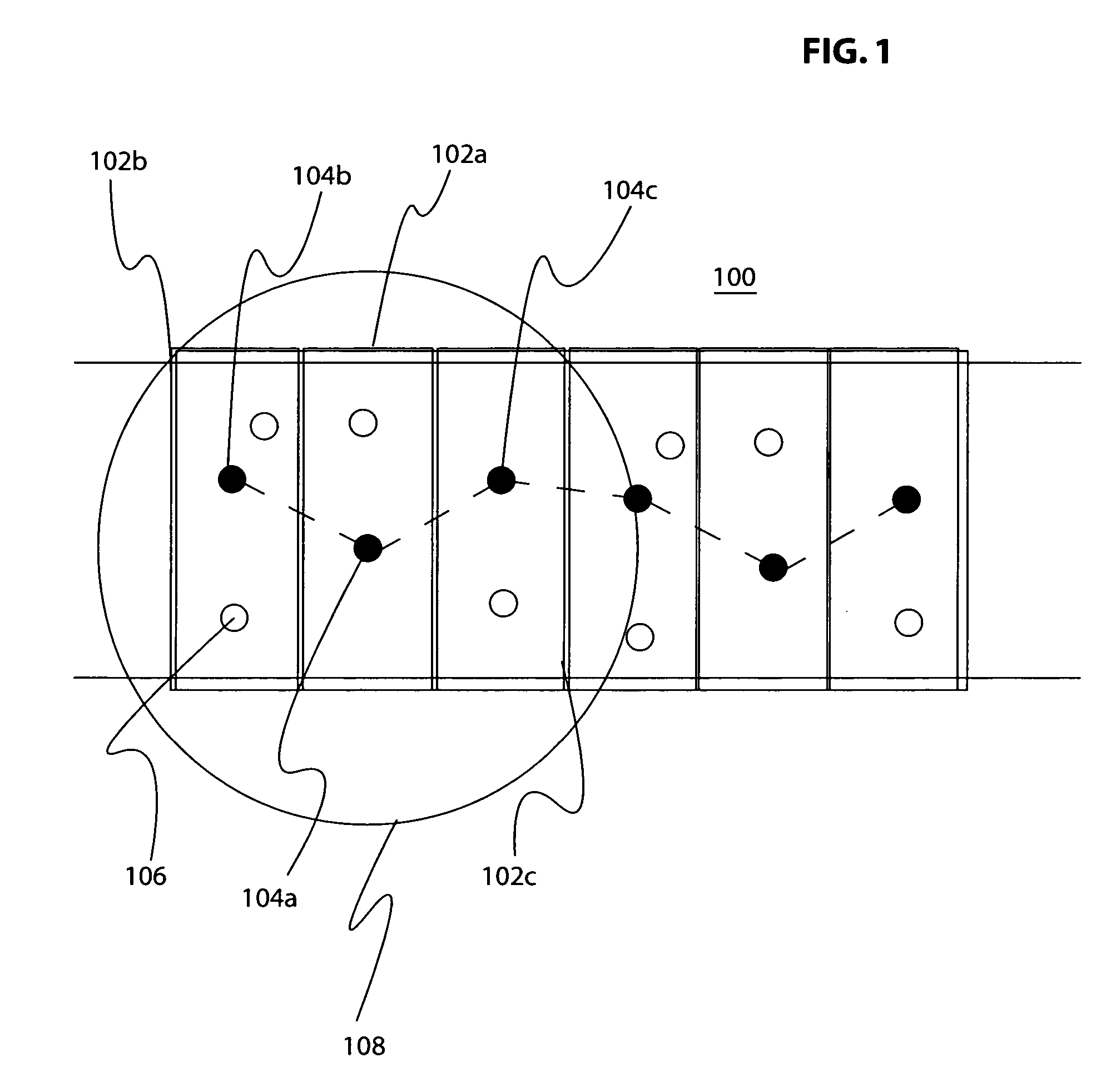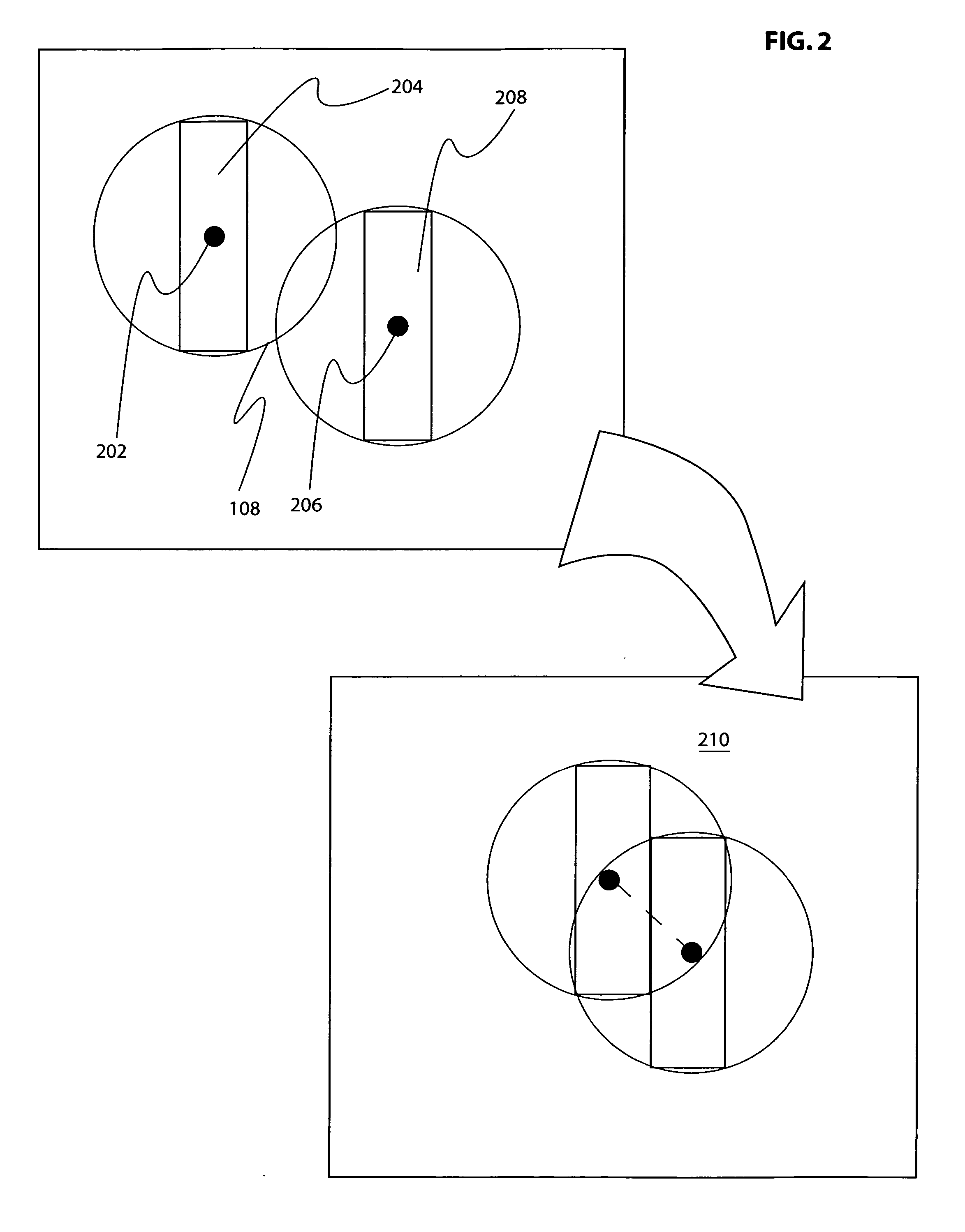Linked equivalent cell header-based approach and protocol for organizing an ad-hoc network
a technology of ad-hoc networks and headers, applied in the field of ad-hoc wireless networks, can solve the problems of interference with each other's transmission, interference with the transmission of radio waves, and the installation of wireless antennas on moving vehicles
- Summary
- Abstract
- Description
- Claims
- Application Information
AI Technical Summary
Benefits of technology
Problems solved by technology
Method used
Image
Examples
Embodiment Construction
[0038] In accordance with the invention, nodes or moving devices are organized into manageable groups. These groups are used to coordinate transmission of data between the nodes. The groups are built based upon the relative location of neighboring nodes. This grouping or Local Peer Group (“LPG”) is the basis for routing within a single LPG as well as between LPGs and organizing transmission in the ad-hoc wireless network according to the invention, to support wireless communications, including but not limited to, vehicle safety and information applications.
[0039] The purpose of the LPGs is to build degrees of coordination among neighboring nodes. These neighboring nodes are moving devices with wireless communications capabilities. Embodiments of moving devices include vehicles with associated communications devices which are installed the vehicles, or independently brought into the vehicles as well as pedestrians with communication devices. The preferred embodiment is moving vehicl...
PUM
 Login to View More
Login to View More Abstract
Description
Claims
Application Information
 Login to View More
Login to View More - R&D
- Intellectual Property
- Life Sciences
- Materials
- Tech Scout
- Unparalleled Data Quality
- Higher Quality Content
- 60% Fewer Hallucinations
Browse by: Latest US Patents, China's latest patents, Technical Efficacy Thesaurus, Application Domain, Technology Topic, Popular Technical Reports.
© 2025 PatSnap. All rights reserved.Legal|Privacy policy|Modern Slavery Act Transparency Statement|Sitemap|About US| Contact US: help@patsnap.com



